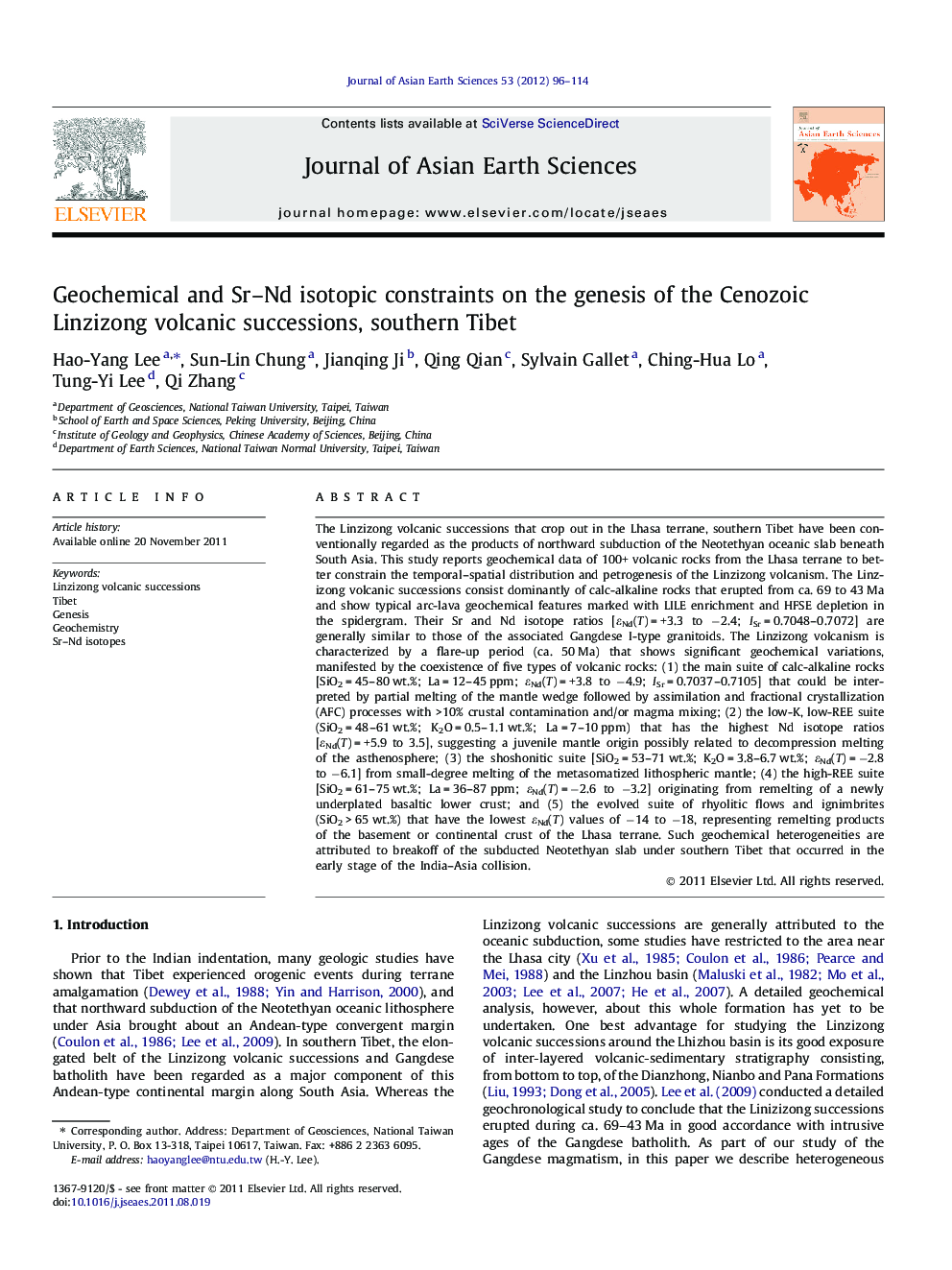| کد مقاله | کد نشریه | سال انتشار | مقاله انگلیسی | نسخه تمام متن |
|---|---|---|---|---|
| 4731384 | 1640411 | 2012 | 19 صفحه PDF | دانلود رایگان |

The Linzizong volcanic successions that crop out in the Lhasa terrane, southern Tibet have been conventionally regarded as the products of northward subduction of the Neotethyan oceanic slab beneath South Asia. This study reports geochemical data of 100+ volcanic rocks from the Lhasa terrane to better constrain the temporal–spatial distribution and petrogenesis of the Linzizong volcanism. The Linzizong volcanic successions consist dominantly of calc-alkaline rocks that erupted from ca. 69 to 43 Ma and show typical arc-lava geochemical features marked with LILE enrichment and HFSE depletion in the spidergram. Their Sr and Nd isotope ratios [εNd(T) = +3.3 to −2.4; ISr = 0.7048–0.7072] are generally similar to those of the associated Gangdese I-type granitoids. The Linzizong volcanism is characterized by a flare-up period (ca. 50 Ma) that shows significant geochemical variations, manifested by the coexistence of five types of volcanic rocks: (1) the main suite of calc-alkaline rocks [SiO2 = 45–80 wt.%; La = 12–45 ppm; εNd(T) = +3.8 to −4.9; ISr = 0.7037–0.7105] that could be interpreted by partial melting of the mantle wedge followed by assimilation and fractional crystallization (AFC) processes with >10% crustal contamination and/or magma mixing; (2) the low-K, low-REE suite (SiO2 = 48–61 wt.%; K2O = 0.5–1.1 wt.%; La = 7–10 ppm) that has the highest Nd isotope ratios [εNd(T) = +5.9 to 3.5], suggesting a juvenile mantle origin possibly related to decompression melting of the asthenosphere; (3) the shoshonitic suite [SiO2 = 53–71 wt.%; K2O = 3.8–6.7 wt.%; εNd(T) = −2.8 to −6.1] from small-degree melting of the metasomatized lithospheric mantle; (4) the high-REE suite [SiO2 = 61–75 wt.%; La = 36–87 ppm; εNd(T) = −2.6 to −3.2] originating from remelting of a newly underplated basaltic lower crust; and (5) the evolved suite of rhyolitic flows and ignimbrites (SiO2 > 65 wt.%) that have the lowest εNd(T) values of −14 to −18, representing remelting products of the basement or continental crust of the Lhasa terrane. Such geochemical heterogeneities are attributed to breakoff of the subducted Neotethyan slab under southern Tibet that occurred in the early stage of the India–Asia collision.
► New and comprehensive major and trace element and Sr–Nd isotope results are reported.
► Calc-alkaline rocks (ca. 69–43 Ma) show typical arc-lava geochemical characteristics.
► Eocene “flare-ups” display significant geochemical variations in magma compositions.
► Our data stand the models of rollback and breakoff of the subducted Neotethyan slab.
Journal: Journal of Asian Earth Sciences - Volume 53, 7 July 2012, Pages 96–114